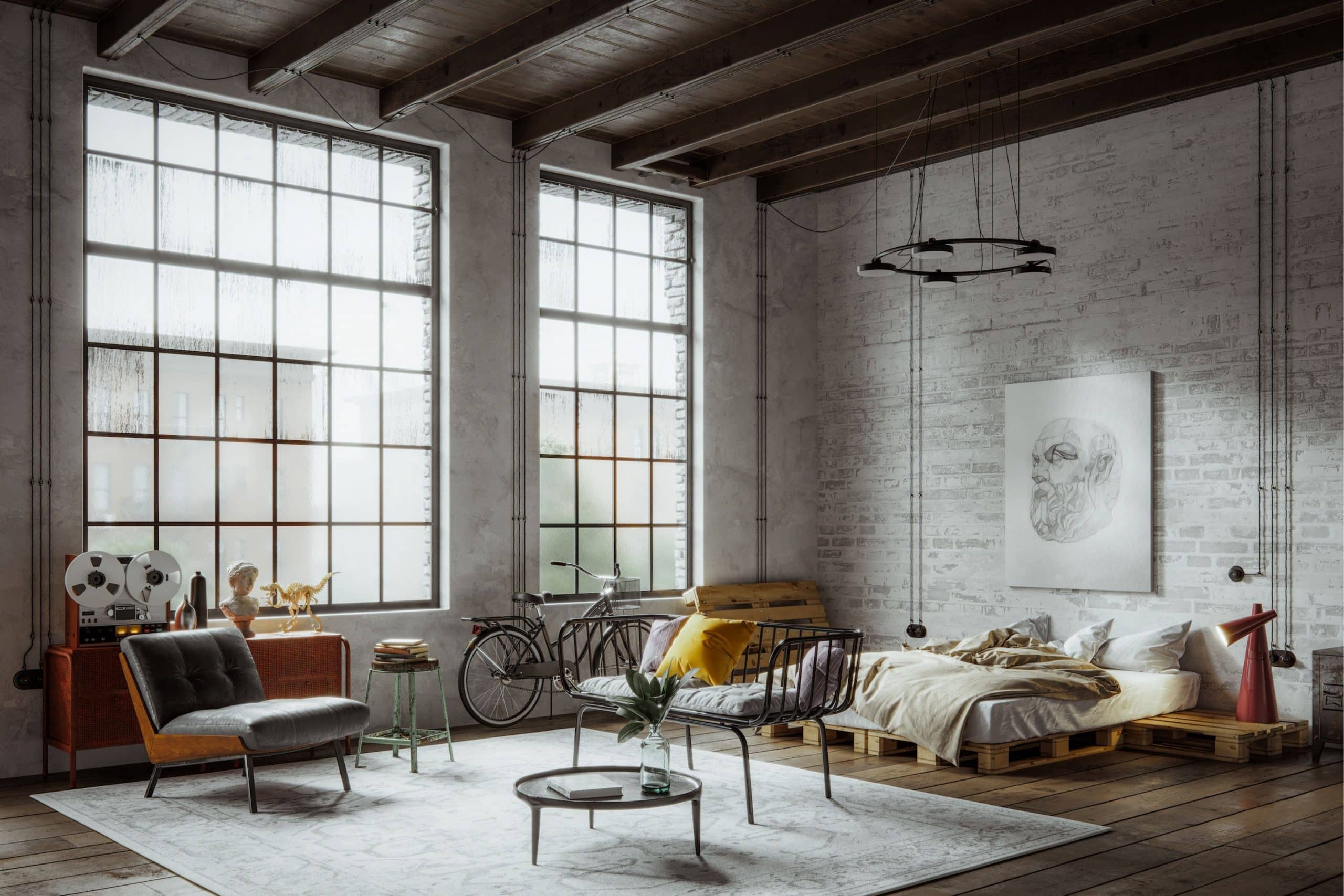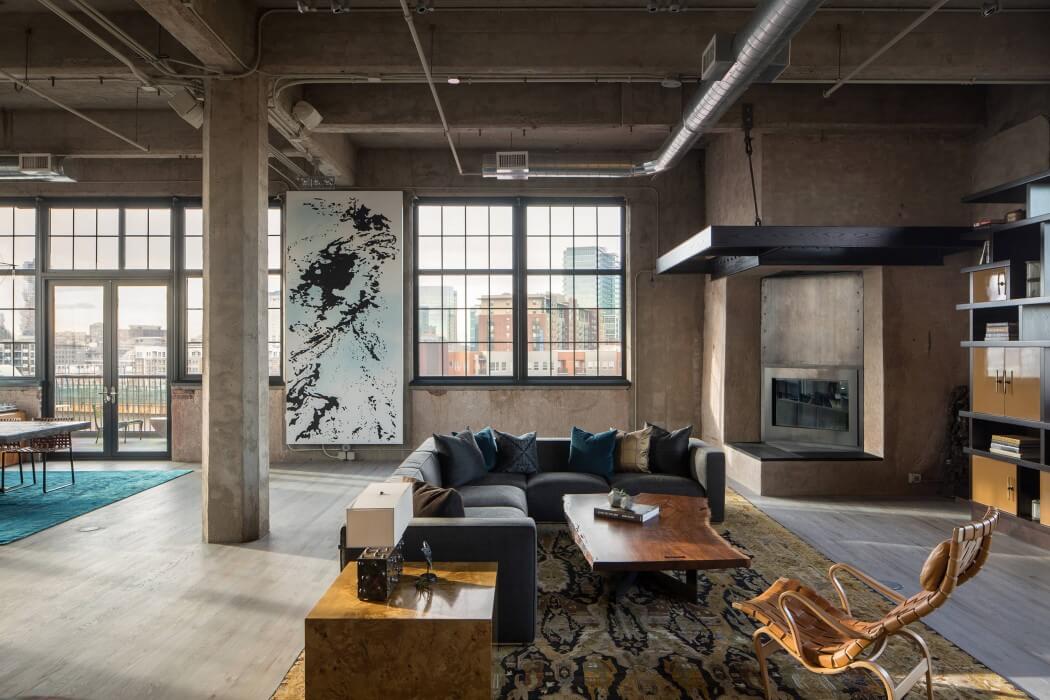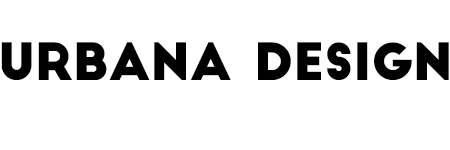Industrial style in interior design is a trend that draws inspiration from old factory spaces, warehouses and other industrial structures, and seeks to incorporate raw and functional elements into living spaces. This style emerged in New York in the ’50s where old factories were converted into homes or what we now call lofts. This style is still going strong today, incorporating modern elements. Here are some rules of the industrial style:
1– Raw materials and structural exposure: One of the most distinctive features of the industrial style is the exposure of structural elements and raw materials. Brick walls, steel beams, columns and high ceilings are often left exposed, highlighting the authenticity and showing a bit of the history of the space.
2- Neutral color palette: Typical colors in the industrial style are neutral and sober, such as shades of gray, white, black and beige. These colors help to highlight the materials and architectural elements rather than compete with them. If you want to add a little more color, these should be solid, i.e., without patterns and preferably dark and cold , such as blues or greens.
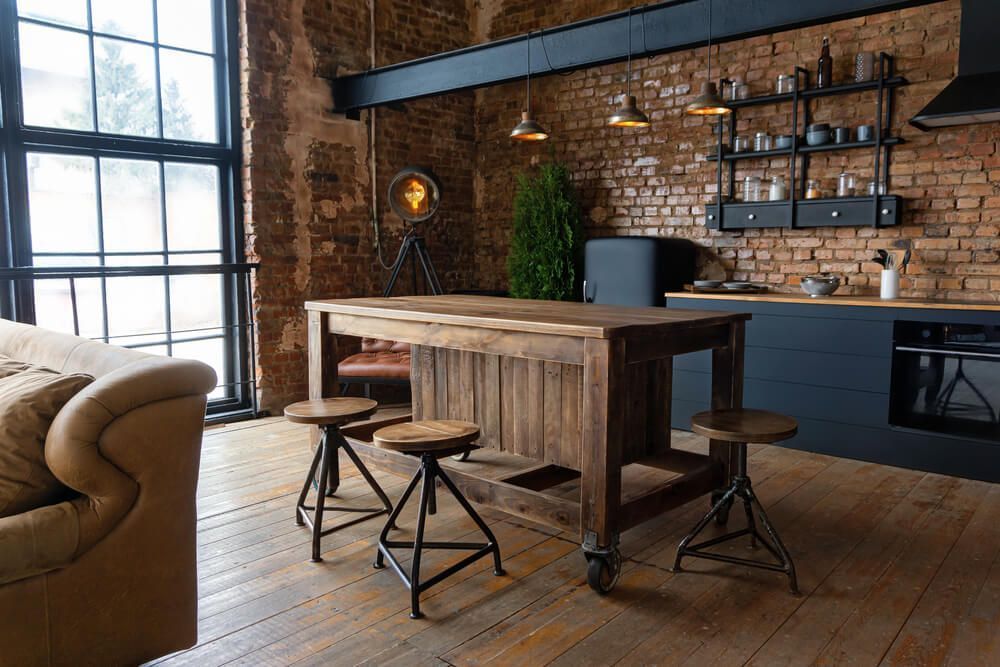
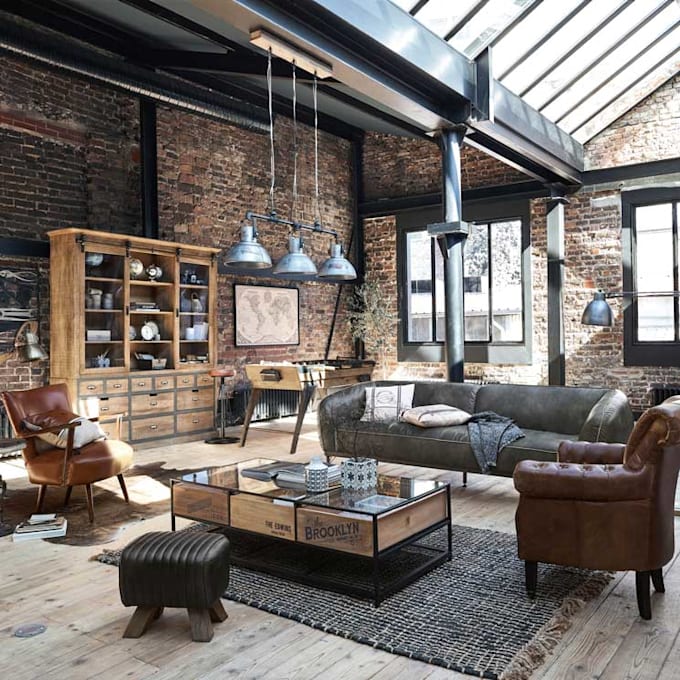
3- Worn and aged surfaces: The industrial style adopts the idea of imperfection. Furniture and decorative elements may show signs of wear and aging, such as scratches, rust or marks, which adds character and originality to the space.
4- Functional and simple furniture: Furniture in the industrial style usually has simple and functional lines. Pieces without unnecessary ornaments and materials such as metal, raw wood and leather are preferred. Furniture can have a robust and resistant appearance.
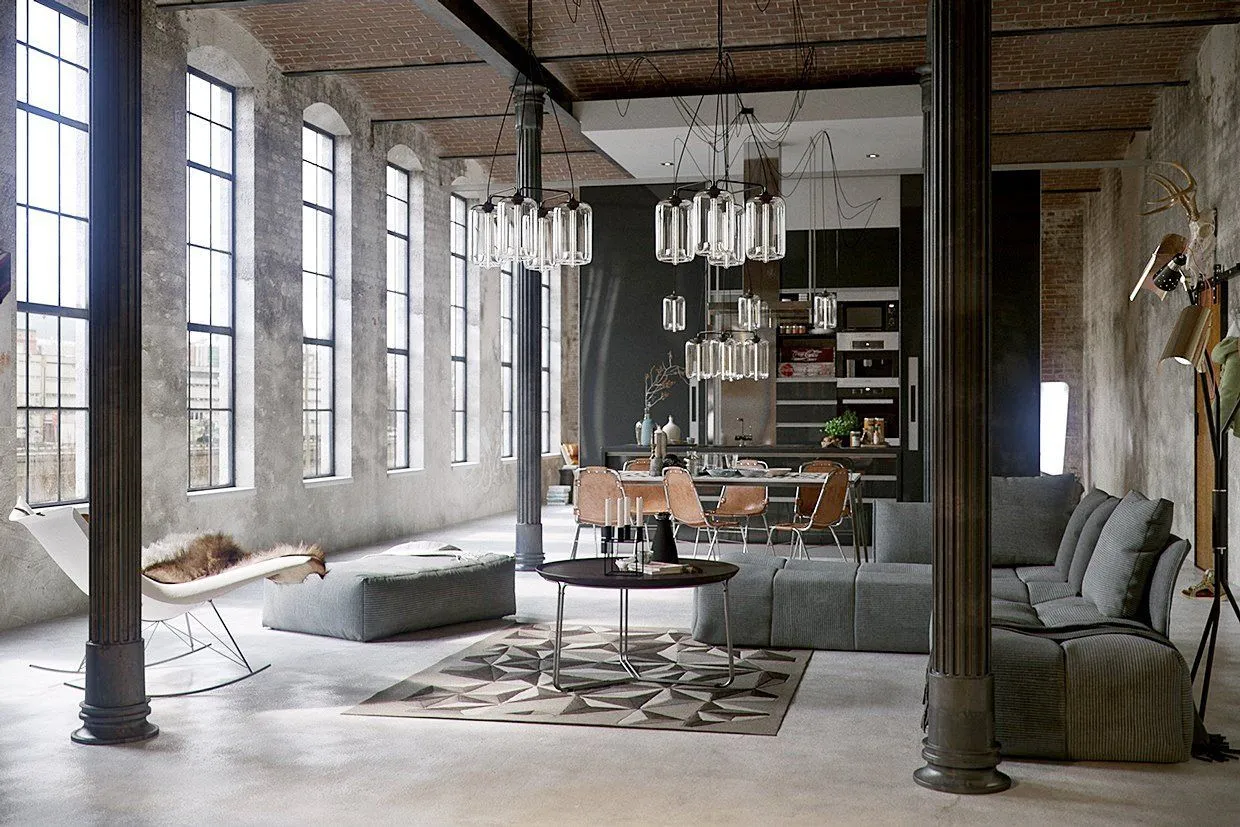
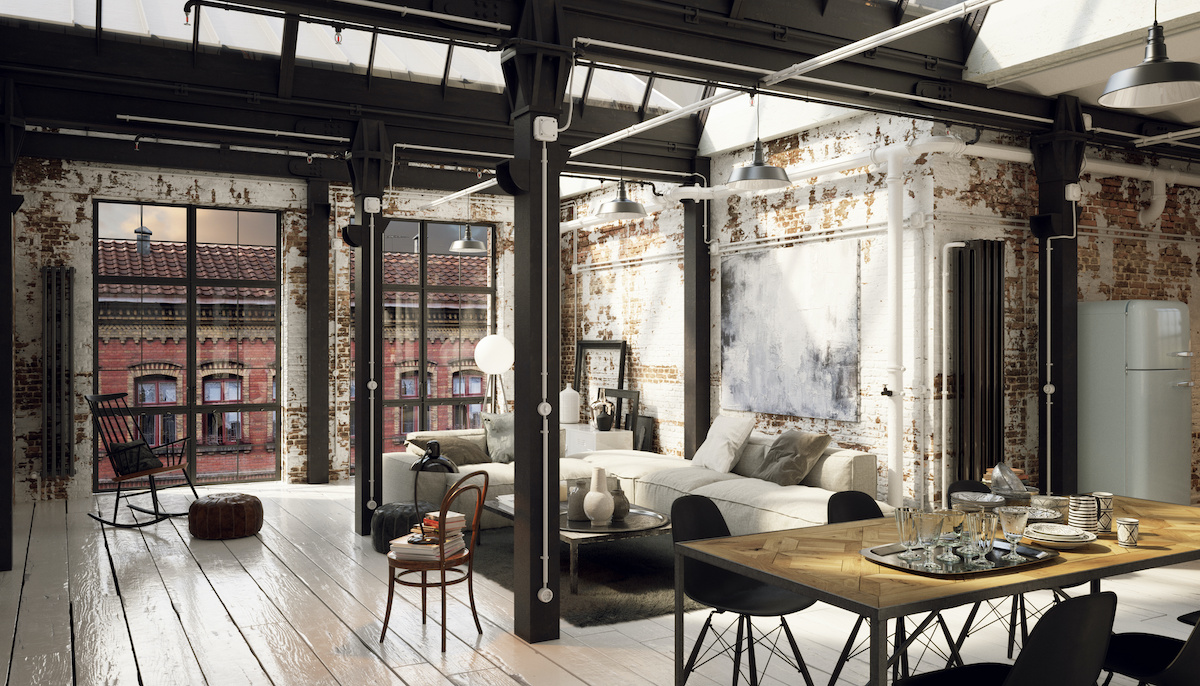
5- Exposed lighting: Pendant lamps and exposed light fixtures are a common feature in the industrial style. Lamps may be suspended from cables, chains or pipes. In this style the original structure is also respected and this means that those huge windows that originally existed in the old factories are maintained and provide natural lighting throughout the space.
6- Use of pipes and ducts: Piping and ventilation ducts are often left exposed in the industrial style. These elements can be creatively incorporated into the design, adding a touch of authenticity and functionality.
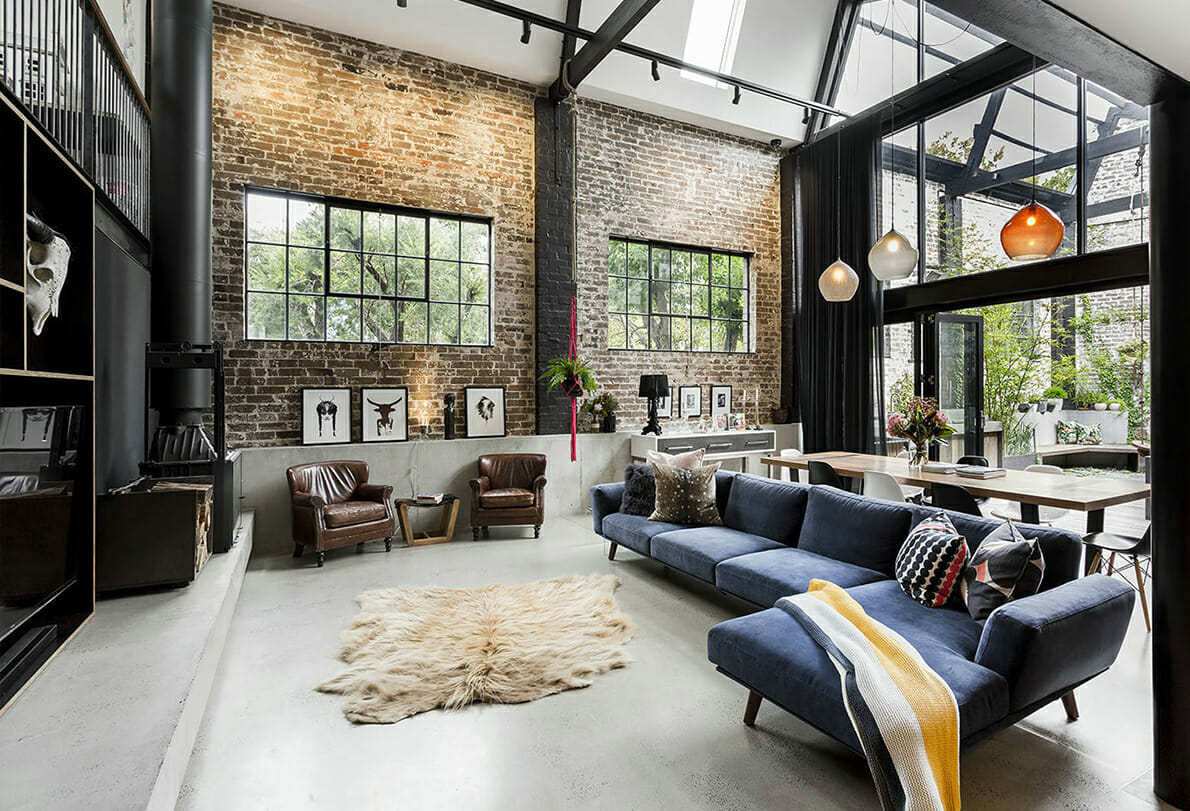
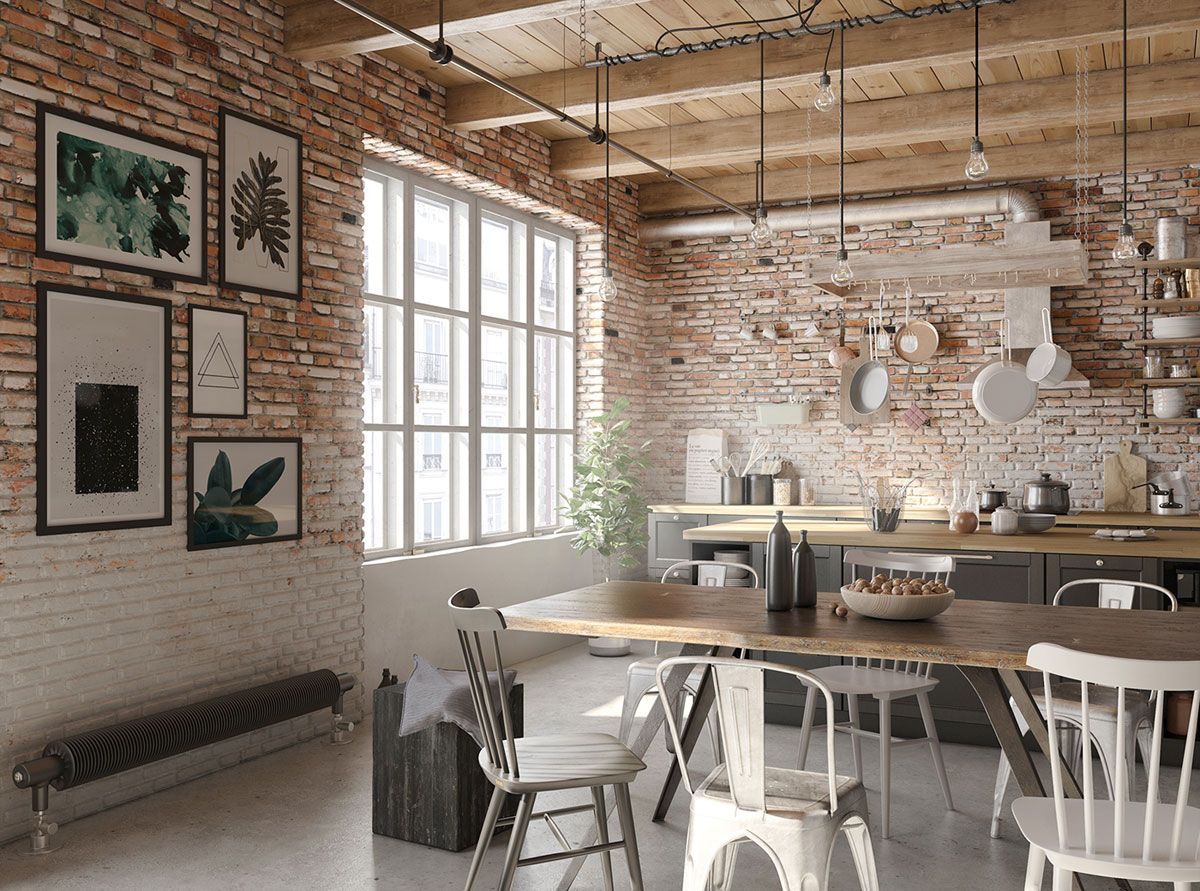
7- Metal elements: The use of metal, especially steel, is characteristic of the industrial style. It can be seen in railings, furniture, lamps and decorative details. Metal is combined with wood and other materials to create contrast.
8- Open plan spaces: Industrial style lends itself well to open plan spaces, where divisions are minimal and fluidity between areas is a key element. This can create a sense of spaciousness and connectivity. In the 50s factories and warehouses that were converted into homes were generally double and triple height, this allowed for intimate spaces to be created on another level but always open.
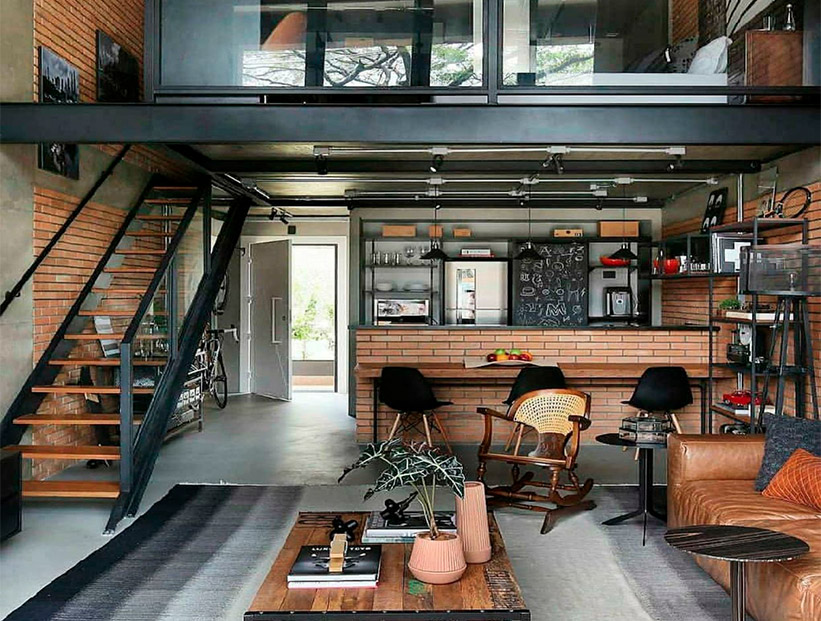
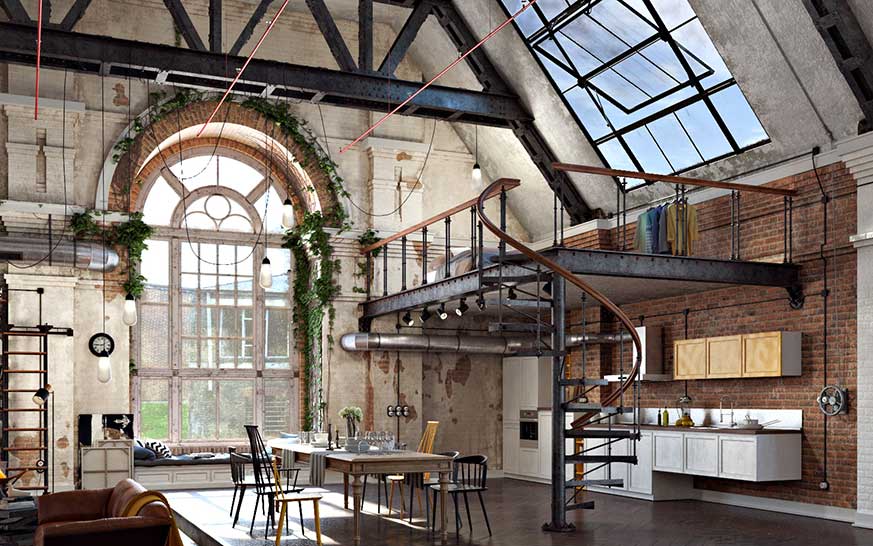
9- Industry-inspired art and details: Artwork, photographs and decor related to industry, such as gear wheels, vintage posters or pieces of antique machinery, can add an authentic touch.
10- Incorporating textiles: Finally, to soften the harshness of the industrial style, textiles such as throw pillows, blankets and curtains in natural and textured fabrics can be added for warmth and comfort.
